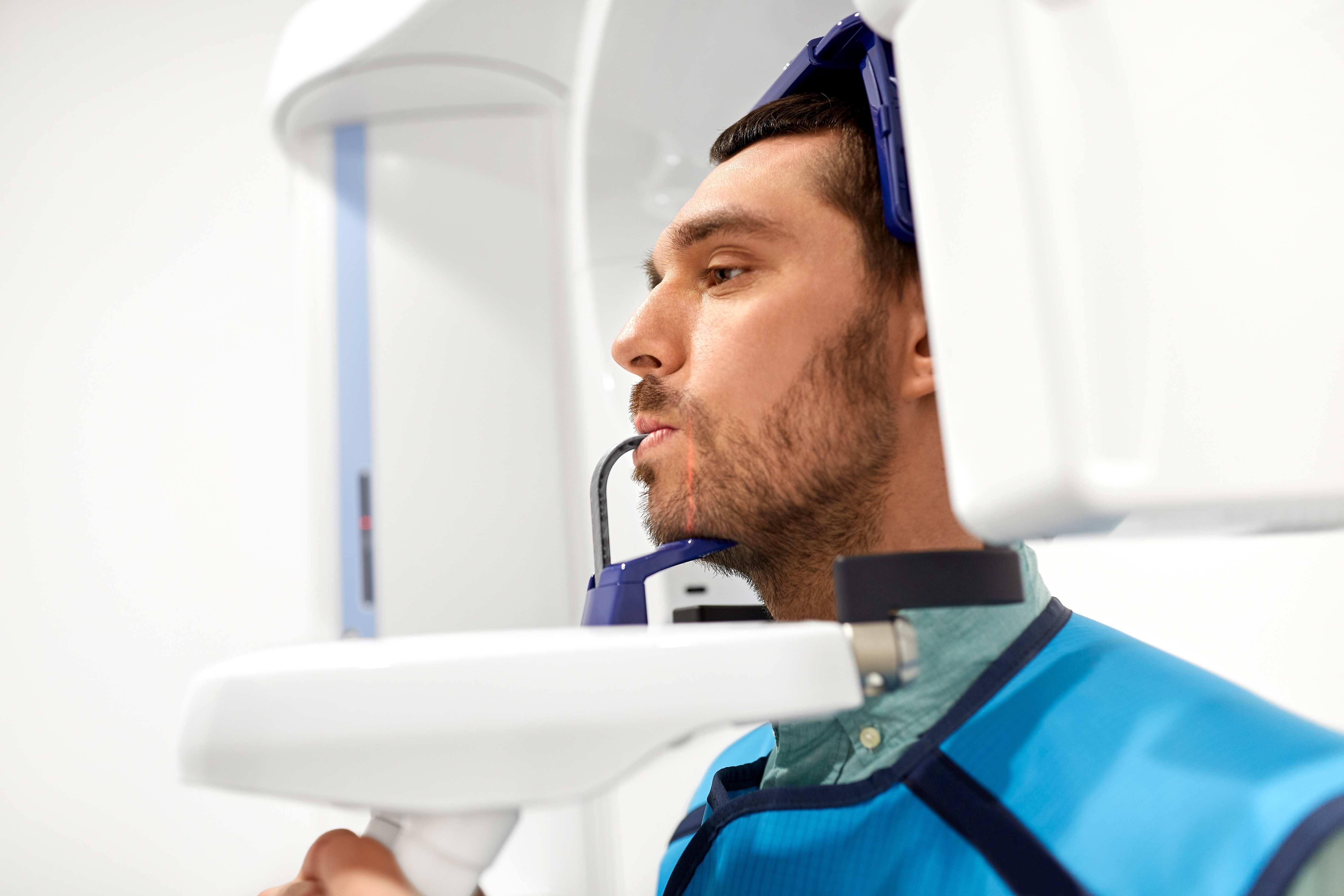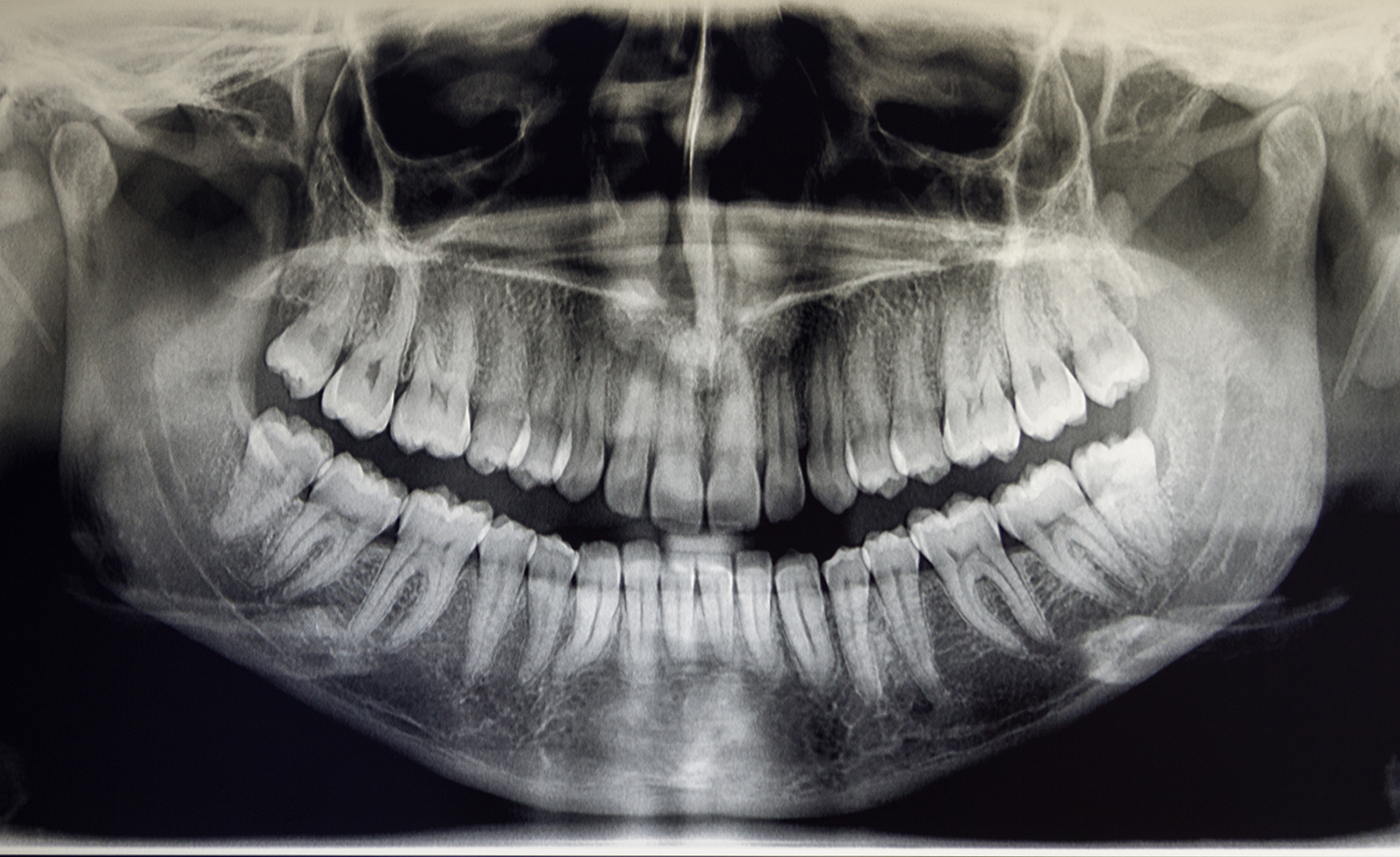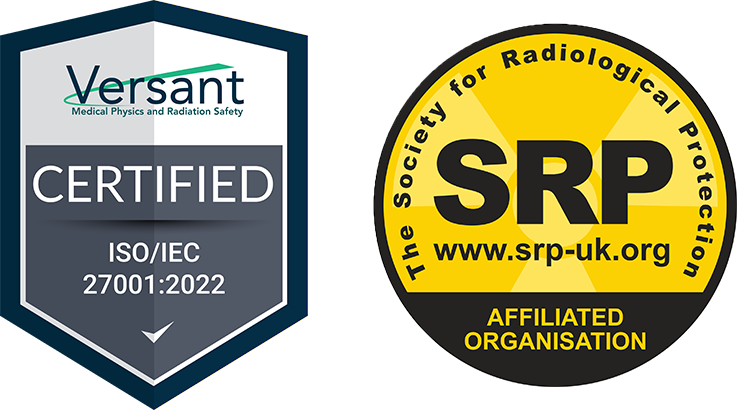Dental x-rays are important for maintaining an individual’s optimal oral health. Like with any x-ray procedure, there are radiation safety principles that have been put in place to protect both patients and dentistry professionals.
Why are Dental X-rays Important?
Dental x-rays are an essential part of maintaining a healthy jaw and teeth. This diagnostic tool allows dentists to take a more in-depth look at what’s going on inside a patient’s mouth. Some dental problems affecting the roots of a tooth or that exist below the gum line cannot be diagnosed through a simple visual exam.
What Can a Dental X-ray Be Used for?
Dentists use dental x-rays to diagnose a variety of dental conditions, including:
- Gum disease
- Cavities and tooth decay
- Impacted teeth
- Cysts
- Abscesses
- Jaw disorders
- Sinus issues
- Bone loss
These x-rays are also beneficial for individuals who smoke, have a history of restorative dental work, or drink an excessive number of sugary drinks like pop or juice.
Radiation Safety for Patients During Dental X-rays
Most patients will undergo at least one of two different types of dental x-rays during their annual or bi-annual visit to the dentist. Each has its own radiation protection requirements to limit the patient’s radiation dose.
Bitewing X-rays
Bitewing x-rays are a type of intraoral x-ray. During a bitewing x-ray, the patient is required to bite down on a small tab attached to an x-ray film. There are usually 4 images taken to help dentists visualize all sides of the mouth.
Patients are usually required to wear a lead vest during a bitewing x-ray. Thyroid collars and leaded glasses can also be used to protect the eyes and sensitive areas of the throat.
Panoramic X-rays
Panoramic x-rays are extraoral x-rays used to diagnose dental problems in the jaw and skull. This 2D digital x-ray captures a single image of the entire mouth.

The machine has two sides. One side houses the x-ray tube, and the other houses the x-ray detector or x-ray film. The x-ray rotates around the patient’s head during this procedure to take the full image. A lead apron or thyroid protective collar may also be worn during this procedure as a safety precaution; however, it is not required.
Miscellaneous Dental X-rays
Other types of dental x-rays a patient may experience include a dental cone beam CT scan (3D image of the teeth and jaw) or a cephalometric projection (image of the entire head). These x-rays are not likely to occur during a routine visit.
Are Dental X-rays Safe?
Patients are exposed to extremely minimal radiation doses during dental x-ray procedures. A patient who undergoes a bitewing x-ray procedure will receive a radiation dose of 0.4 mrem, while a panoramic x-ray radiation dose exposure is approximately 0.7 mrem.
For comparison, the average U.S. citizen receives an annual radiation dose of 620 mrem. The sources of this radiation come from naturally occurring cosmic, internal, and terrestrial radiation, medical procedures like CT scans and conventional radiography procedures, and consumer products like tobacco, fertilizer, or welding rods.
As mentioned above, there are numerous protective measures put in place to help limit overall radiation exposure. Protective measures for patients during a dental x-ray include:
- Using protective lead aprons and thyroid collars
- Using modern x-ray equipment and up to date imaging techniques
- Limiting the number of images taken in a year
The American Dental Association recommends that healthy patients receive x-rays once every 2 to 3 years to limit the amount of radiation exposure they receive.

Like any diagnostic procedure, the benefits of a dental x-ray far outweigh the low radiation dose a patient will receive. Dental x-rays can not only identify existing issues, but they can also identify potential problems that, if left untreated, could turn into serious or even life-threatening issues.
Radiation Safety for Dental Professionals
Radiation safety and radiation protection guidelines are especially important for dental professionals. The NRC regulates the amount of radiation exposure for adults who work with radioactive materials. Occupational exposure limits are limited to 5,000 mrem per year.
Dental professionals including hygienists, oral surgeons, and orthodontists, are required to adhere to these exposure limits. This profession receives less ionizing radiation exposure than other healthcare professionals on average. However, basic protective measures help limit their occupational radiation exposure and keep up with ALARA standards.
Personal Dosimeter
Dental professionals should wear a personal dosimeter when operating x-ray equipment to record their dose.

The Instadose+ dosimeter is an affordable personal dosimeter option that provides dentists and dental professionals with accurate, long-term exposure tracking. The device wirelessly captures, transmits, measures, and analyzes radiation dose exposure. Dental professionals can access their read history on-demand and in real-time thanks to the device’s Bluetooth and SmartMonitoring technology.
Unlike traditional film badges, the Instadose+ dosimeter does not need to be collected and processed off-site.
Time, Distance, and Shielding
The standard guidelines for minimizing dental professionals’ exposure are time, distance, and shielding. This means limiting the amount of time spent around a radiation source, maintaining a safe distance away from the source of radiation, and standing behind protective barriers during a procedure.
During a routine dental visit, hygienists are often the ones who prepare and take the dental x-ray. To limit their exposure from taking these images multiple times a day, hygienists will usually leave the room to increase their distance from the x-ray tube. They may also stand behind a lead wall or partition while the image is being taken.
The Takeaway
Dental x-rays are a necessary part of maintaining good oral health. Radiation safety guidelines like wearing lead vests and thyroid collars are important for limiting patient exposure during routine checkups. Wearing a personal dosimeter and following time, distance, and shielding guidelines are also necessary for limiting occupational exposure.


